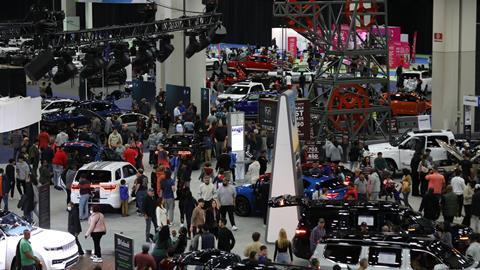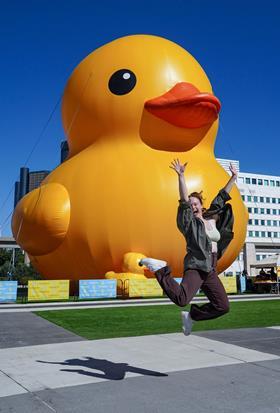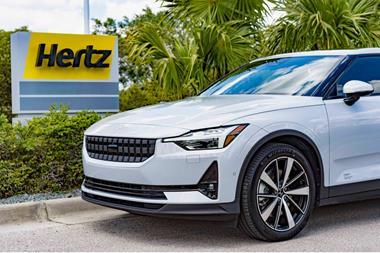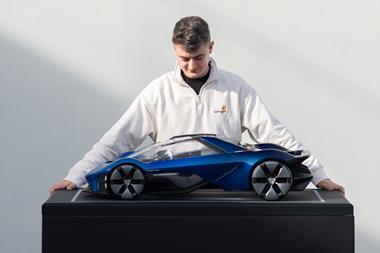The Detroit auto show was a dispiriting experience. Could design help to revive it?
First off, I love Detroit. I love the musical heritage. Growing up, Tommy Hearns was my favourite boxer. I love the Art Deco buildings that characterise the downtown. Same goes for the optimistic sci-fi modernism of GM headquarters, which hoped to precipitate a renaissance that seemed forever over the horizon.
It seems a cruel joke that just as that renaissance arrives, the Detroit Motor Show appears to be entering a terminal death spiral. The big three: Ford, General Motors, Stellantis were there, but, aside from a presence by Toyota, few other brands of note had bothered turning up. This apathetic air extended to the hometown brands, with few genuinely new launches, much less concept cars to liven things up. Among scant offerings, we saw a revamped Jeep Gladiator with a new grille treatment, a GMC Acadia and the Cadillac Escalade IQ.
Ford showed off the rally version of the Mustang Mach-E, complete with retro-looking hubs and a jazzy windfoil and the undeniably badass Dark Horse special edition – a terrifying looking beast that would have all but the steeliest giving way should it menace in the rear view mirror.
And that was it really. I spoke to Ford’s Anthony Lo who expressed a commitment to the show. “It is our backyard.” Others were less convinced. The general feeling, and believe me, I asked everyone I spoke to, was frustration mixed with sadness. The show is just not a draw anymore.
Much has been written about the future of the motor show. Amid the sea of opinions, there has been a general acknowledgement that the format needs to change. In a world where immersive experiences, both in the physical and digital worlds, are becoming the norm it is no longer enough to build a stand and expect people to come. To be fair, there was an indoor off-road track to show off the capabilities of various SUVs and trucks.
For Detroit, this means leaning into its vaunted heritage while tapping into the new wave of creativity the city offers
So, what is to be done? Well, the IAA moved from Frankfurt to Munich and rebranded itself a mobility show. The show organisers have worked to establish a relationship with the city itself with installations and the like in the town centre. Detroit moved too, but its timing rather than location.
Balmy September is a much better time of year than icy January – plus it made sense not to compete with CES in Las Vegas. Detroit is infinitely cooler than Munich and given the downtown is far safer than it was, the very least the show organisers could do is escape the confines of the convention centre and celebrate the urban setting. Yes, I know it’s been tried – but perhaps a giant inflatable duck was not the answer.
Point is, there is an abundance of creative energy pulsing through those historic streets – could greater engagement with the design community beyond automotive inject some life into the format. I was at the annual sketch battle in a fantastic new co-working building adjacent to the grand central station and the place was crackling with energy. With CCS at the heart of the city, there is plenty more talent where that came from.
Goodwood Festival of Speed frequently came up in conversation. An English country estate on the edge of the South Downs is about as far removed from the Motor City as you can imagine. What Goodwood gets right is its unashamed celebration of cars. And there is a lesson for everyone in the automotive industry because I believe that OEMs are suffering from an existential crisis. In a world where the dominative narrative focuses on the environment, car companies have come to view themselves as the bad guys. Hence the mildly baffling, not to mention futile desire, to rebrand themselves as tech companies.
Don’t get me wrong, the auto industry has been pretty wasteful over the years, and the drive to make cleaner, more sustainable cars is sound. But multitudes across the globe rely on cars to live their lives. The automotive industry should embrace this. For Detroit, this means leaning into its vaunted heritage while tapping into the new wave of creativity the city offers. The alternative is to continue bumbling along as a regional show when it can be so much more.




















1 Reader's comment